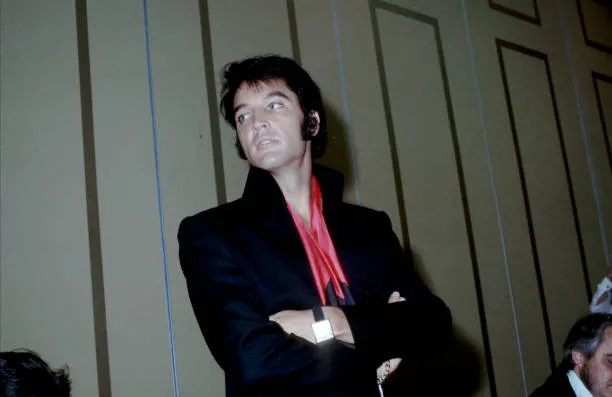In Baz Luhrmann’s 2022 biopic Elvis, we see a young Elvis Presley sneaking up to a joint in Tulepo, Mississippi, peering through a crack in its wooden walls and being exposed to the devil’s music for the first time. This artistic rendering of Presley’s introduction to the blues is unlikely to have happened in reality.
In fact, Elvis became familiar with music through white country singers as a child. Depression-era dustbowl balladeer Hank Snow was his favourite, while he modelled much of his singing style on southern gospel singer Jake Hess. There’s no doubt that Hess, Snow and the various other country performers the young Elvis listened to were heavily influenced by the traditions of Black spirituals. But it wasn’t until later that the aspiring musician encountered the blues directly.
As a high-schooler in Memphis, Tennessee, he began rebelling against his whiter-than-white upbringing by growing sideburns and mimicking the dress sense of Black music artists like BB King, who bought their clothes from the Lansky Brothers, who had their shop on Beale Street. This stretch of road was the home of the blues in Memphis.
To make extra money, blues venues hosting Black performers from across the southern United States would sometimes put on shows for white audiences. Given that Memphis, like the rest of Tennessee, was ruled by Jim Crow segregation laws during Elvis’ youth, he couldn’t go and watch rhythm and blues performers alongside Black audiences, as is portrayed in Luhrmann’s film.
Which blues singer did Elvis see first, then?
We’ll never know the first performer who introduced Elvis Presley to blues music. It’s just as likely that he initially came across the blues while secretly listening to the Memphis-based radio station WDIA before seeing any blues player perform on Beale Street.
Either way, we do know that the blues artist who had the most impact on him was a regular performer in Beale Street blues bars. In an interview with a Dutch reporter during his Las Vegas residency, Elvis told them, “All I ever wanted to be was as good as Arthur Crudup. I saw him in 1949.” Mississippi bluesman Arthur ‘Big Boy’ Crudup was only really known to aficionados of the genre even at the height of his career. According to Elvis’ claim, he was 14 years old when he saw him play live.
That is until Elvis spontaneously recorded Crudup’s 1946 song ‘That’s All Right’ in July 1954. It was released two weeks later as his debut single, becoming a local hit and launching the King of rock and roll’s career while he was still a teenager.
Elvis later covered two other Crudup-penned tracks, ‘My Baby Left Me’ and ‘So Glad You’re Mine’, demonstrating the extent of his impact on the young singer. Crudup never received the credit he deserved for his role in Presley’s success during his lifetime. But we can now reflect on the true influence of a blues legend, without whom there’d be no Elvis to speak of.



